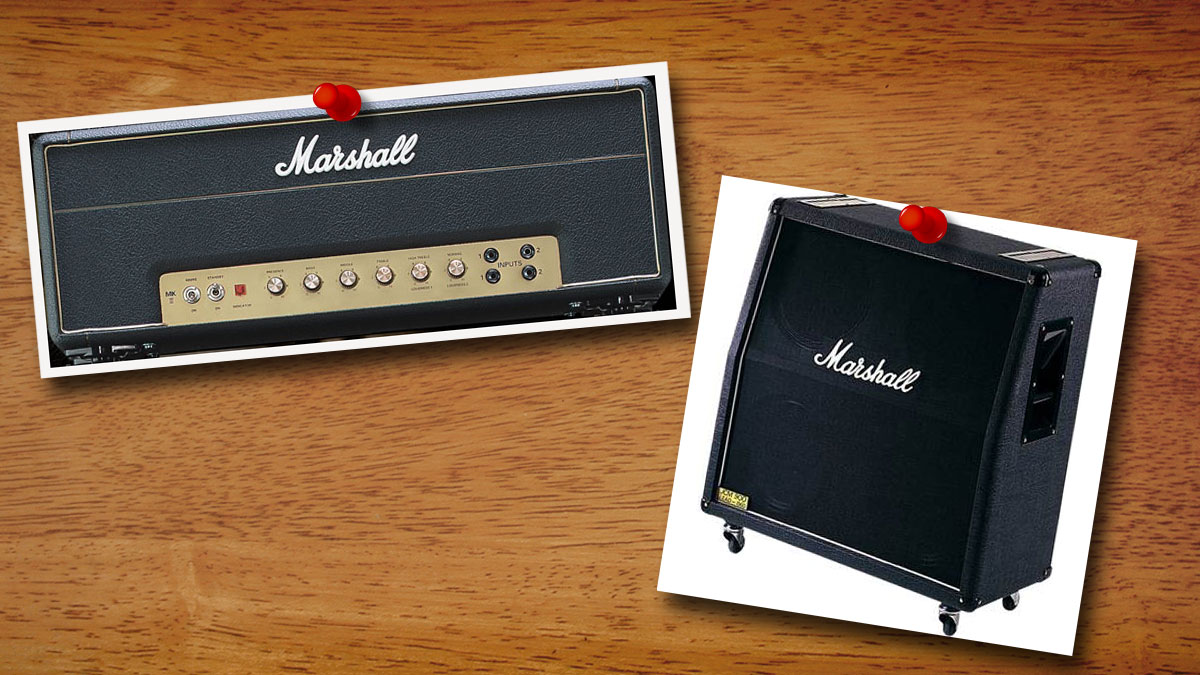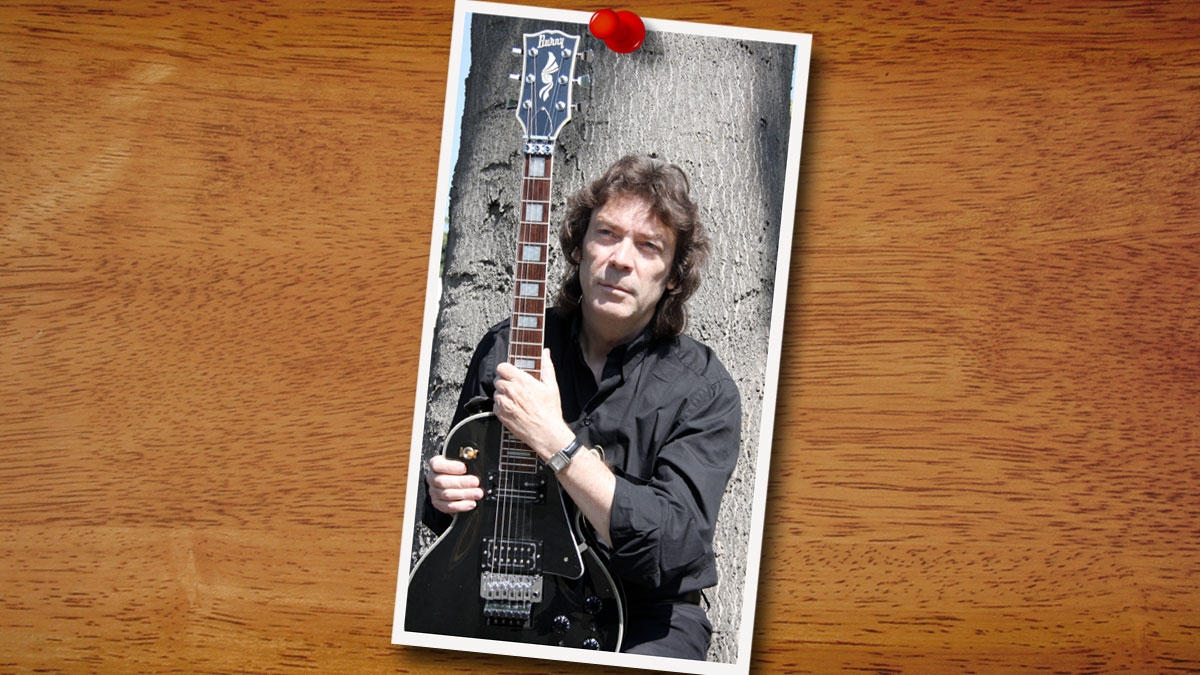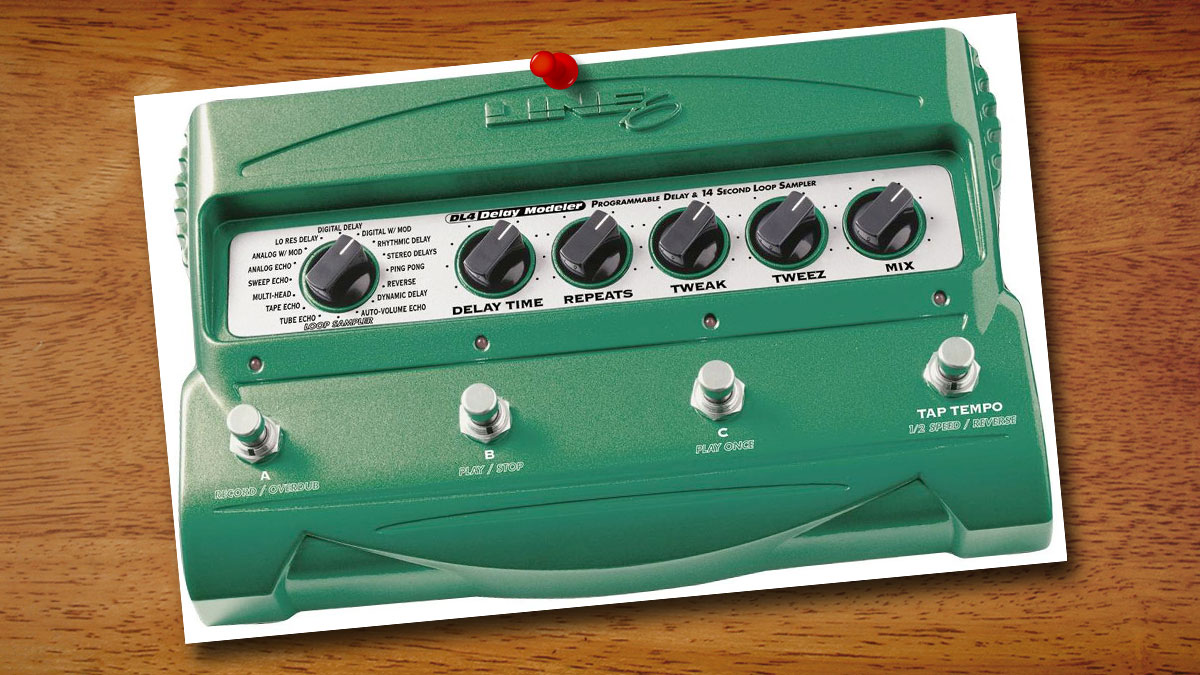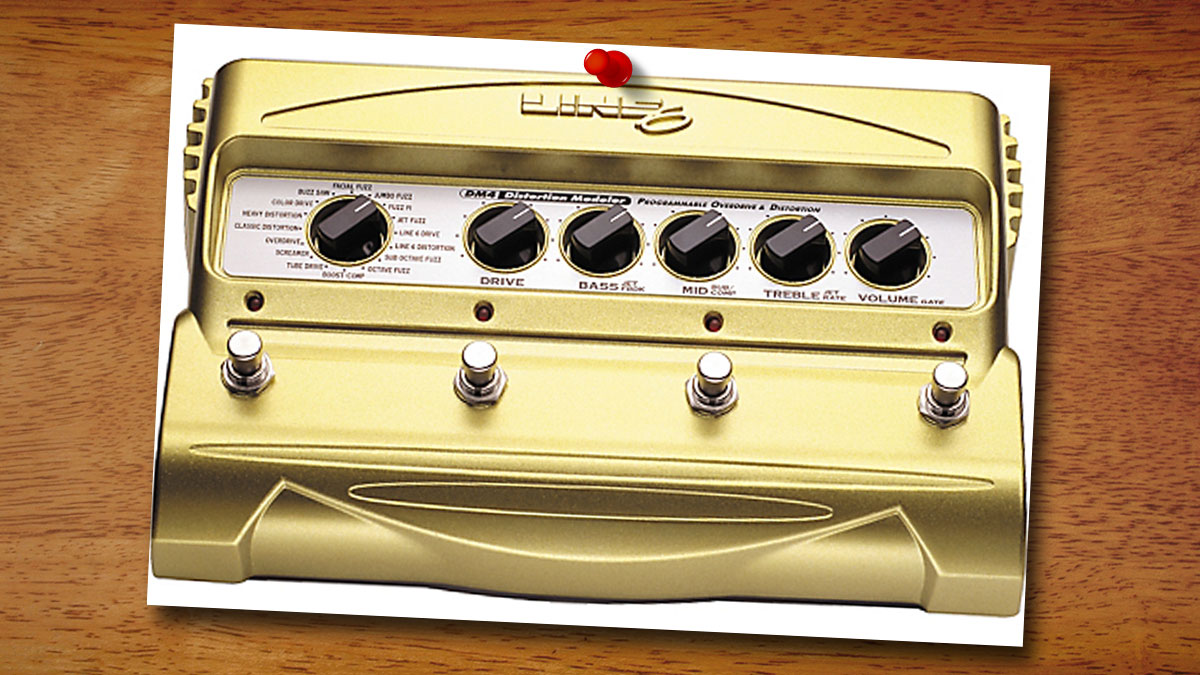Career in gear: Steve Hackett
The trailblazing guitarist on his tonal tools

Introduction
Initially with Genesis and then in his extensive solo catalogue, Steve Hackett forged tones and techniques that have become standard practice among modern players. This is the gear that helped him on that journey…
Throughout his career, Steve Hackett’s kept an open-mind about gear, questioning his equipment and refusing to tow the worn-out line that ‘old is gold’.
"I suspect that all of them ended up doing things that they weren’t designed to do originally!"
“I’ve never found an electric guitar that did absolutely everything,” he tells MusicRadar. “It’s one of those annoying things - you have to change guitars like golfers change clubs. No guitar possesses absolutely everything.”
From a 1957 Les Paul Goldtop through to a selection of off-the-shelf stompboxes you’ll likely have on your own ‘board, Steve’s Career In Gear choices don’t have a lot in common.
“There is one thing,” suggests the guitarist. “I suspect that all of them ended up doing things that they weren’t designed to do originally!”
Steve Hackett brings his 19 date Acolyte To Wolflight with Genesis Revisited Tour to the UK in October. Head to www.hackettsongs.com/tour for tickets and more information.

1957 Gibson Les Paul
“I think I got my Les Paul in about 1972. It’s the one I used on Selling England By The Pound - on Firth Of Fifth and Dancing With The Moonlit Knight and various other things through my Genesis time.
"I was playing it this morning and even unplugged it’s a great guitar"
“I’ve used it extensively. It’s on tonnes of things. I was playing it this morning and even unplugged it’s a great guitar. Phil Joiner re-fretted it and it made all the difference to the action, it has an action like butter. It offers no resistance, which is wonderful.”
“It cost me $800, which seemed like a lot of money at the time and you have to take into account inflation [approx. $4,560 or £2,900 in today’s prices]. They gave me a hard time at customs when I brought it back, even though I had a legitimate receipt. I was just happy not to be stripped naked. That doesn’t seem to happen quite so much these days, but it happened to me on several occasions in the old days, it was part of…”
…The rubber glove treatment?
“[Laughs] No, I didn’t get the rubber glove! No cameras up the Khyber! Which I’m eternally gratefully for. If anyone’s got the video of that time, please return it to me and we’ll send it to Andy Warhol.”

1973 Yairi nylon-string acoustic
“I bought this one at the beginning of 1974 - when we were rehearsing for Lamb Lies Down On Broadway - from Ivor Mairants’ shop on Rathbone Place [in London].
"It’s been with me for a long time and these things are like old friends really. I originally played it on Lamb Lies Down On Broadway on Hairless Heart"
“It was the loudest guitar in the shop. It sounded almost like a piano and it had enormous depth. It had extraordinary projection and it’s usually my guitar of choice when recording these days.
“It’s been with me for a long time and these things are like old friends really. I originally played it on Lamb Lies Down On Broadway on Hairless Heart and then, probably more importantly, I played it in 1977 on Wind And Wuthering - Blood On The Rooftops has that long intro on it. It is a great guitar.
“I’ve been very lucky working with the Japanese. They’ve been extremely generous with me and I’ve been happy to endorse both the Yairi and Fernandes models.”

1976 Tony Zemaitis 12-string
“Mike Rutherford got a 12-string made by the late, great Tony Zemaitis. I was very impressed with Mike’s one and I borrowed it for my first solo outing, which was Voyage Of The Acolyte, and lent him my nylon at the same time. The following year, I got Tony to make one for me.
"I very much got the feeling that Zemaitis had developed this thing as a hobby, but he made them extraordinarily well"
“He would make one guitar in his shed and it would take him about three months and then he would make another for another customer. He had this book and it had a picture of George Harrison and a picture of Bob Dylan - all of these people playing his guitars. I very much got the feeling that he’d developed this thing as a hobby, but he made them extraordinarily well.
“I acquired it in 1976 and it’s still going strong. It’s all over my solo stuff and it’s partly over Genesis stuff. It’s on Please Don’t Touch, it’s on Spectral Mornings and many more.”

2x Marshall 50-watt 1987x Plexi heads
“I use these for live work. I think it’s pure fetishism. I’m a Marshall fetishist and those are the first amps I heard really screaming and doing the business.
"The first time I heard them live was with the very young Peter Green in 1966"
“During my time with Genesis I used to use Hiwatt amps and then a little Fender Champ or a Pignose and various small amps to record with and then I moved on to Roland Jazz Chorus 150s, but when I left Genesis I moved on to Marshalls and I haven’t really changed. I just find the durability is wonderful.
“The first time I heard them live was with the very young Peter Green in 1966. He had a fabulous sound and, of course, on record I’d heard pretty much the same setup from Eric Clapton on the Beano album. That’s still pretty much the bible for electric guitarists that I’ve worked with - Brian May, Steve Howe etc. We all tend to have that in our record collection and refer to it.”

Fernandes Burny
“They made this for me as a gift, because I’d been buying multiple versions of Fernandes guitars. First, I had a Strat-shaped one in the 1990s and then I think they made this one for me about 15 years ago, though I’m not very good with dates!
"There’s an upper-harmonic, which on the first three strings is very strong"
“It’s got the sustainer pickup and the tremolo arm - because you wouldn’t really want to do that to an old Les Paul. There’s certain tones you can get with it that I believe you can’t get with other guitars. It also depends on where you’ve got it going through and how heavily you’re striking the string and where you’re striking the string. There’s an upper-harmonic, which on the first three strings is very strong.
“It means you can get sustain without the tyranny of volume. You’re not dependent on turning up amps to 11 and all of that nonsense that went out with the arc. Or should have done!”

Digitech Whammy
“I was working with John Paul Jones in Japan and he was using one on the bass. I thought, ‘Very interesting!’ Essentially, it’s a harmoniser operated via the foot and it’s got a number of parameters on it that are very clever.
"Again, it’s just about expanding the limits of what a guitar can do"
“You can spot it in other people’s playing at times, too. Again, it’s just about expanding the limits of what a guitar can do. It’s nice to have an upper or a lower octave, or that piccolo rock guitar sound. They’re all very strange settings and very different and it can make the guitar sound like a synth as well.
“I used it on a Steven Wilson track on his album Grace For Drowning. I believe the track was called Remainder The Black Dog and I used it for a solo on that. I also used it extensively on an album I made with Chris Squire called Squackett [A Life Within A Day].”

Analogue Man Beano Boost
“Eric [Clapton] says that he didn’t use an Treble Boost back in the day, but then there are other people who swear that the [Dallas] Rangemaster was part of that setup.
"The Beano boost really does that Rangemaster job"
“The Beano boost really does that job. It’s really bright and it’s very good for certain things - it works really well live.”

Pete Cornish Iron Boost
“Then I’ve got the Pete Cornish Iron Boost, which is less toppy, but seems to screw the sound up into a ball and make it sound more alive. It gives it a real kick.
"I have one thing that makes that sound and that’s it!"
“Pete Cornish made this thing for me many years ago and in recent years I asked him to make another one and he said, ‘Could you send the old one in the post? Because I don’t know what I put in it…’ I was reluctant to send this thing.
“Much as I’m sure he would have made something every bit as good, but my worry was that with the vagaries of the post it might go missing and then no one would be any the wiser. So I have one thing that makes that sound and that’s it!”

Line 6 DL4 Delay
“I first got into this because of the interesting backwards delays. You could play almost in time with yourself but everything would come out reversed and you could surprise yourself.
"It was psychedelic and you could instantly sound like a mid-60s Beatles album"
“It was psychedelic and you could instantly sound like a mid-60s Beatles album. I think the psychedelic era had a lot to offer. Music has straightened up a lot since that and I miss the element of surprise that was part and parcel of that era.
“I sometimes even try to make things that sound like backwards sounds, but play them forwards, so for instance, if you just hammer-on very lightly with the Fernandes guitar, the note will kind of expand and crescendo under your fingers, so it’s getting louder. I use a mixture of that and a volume pedal quite often to fool people into thinking it’s backwards.”

Line 6 DM4 Distortion Modeller
“[Another relatively recent acquisition], I use this to impersonate a fuzz box - to get that really high upper-harmonic distortion that’s very toppy and brassy.
"You can use three fuzz sounds in series if you want an angry bee sound"
“It’s a good unit. Sometimes I mix it with a SansAmp, because you can mix the upper-harmonic and the cut with the body of the SansAmp, which sounds more like tube distortion. The DM-4 sounds more like an old analogue fuzz box.
“The old fuzz boxes that I used to have, those pedalboards are out of commission and whenever I’ve tried a newer generation of fuzz box, I find they’re not as good as the old ones. Also, fuzz boxes in the virtual world can be mixed and changed.
“You can use three in series if you want an angry bee sound. Then flood it in reverb, so it’s operating very quietly and sounds like it’s tearing away in the background.”

Korg Volume Pedal
“The era of the volume pedal player is really where I came in, so that you could adjust your level, but not necessarily change your sound.
"I always marvel at players that can control it without a volume pedal"
“It depends on what players you’re playing with. If you’ve got a band that are one minute trying to be a rock band and the next trying to be a folk outfit and the next they’re trying to sound like an orchestra then you do find that volume pedals are all part of it!
“Steve Rothery is very much a volume pedal player, like myself, and so is Robert Fripp. I always marvel at players that can control it without a volume pedal. But I’ve never been one for running all over the stage, I tend to be ‘fixed position’ and the energy all comes from the playing, I think.”

Conclusions
“I think, if anything, my sound has hardened up over the years, whereas I think it was creamier at one time. Of course, all of these sounds are all equally wonderful - you just have to find the right context for them.
"I don’t think the best era for tone is in the past"
“I don’t think the best era for tone is in the past, though. I think perhaps the only thing we’ve lost is the moment live when a guy would be standing on stage with a Marshall stack, which then would crank up into a solo and, because it wasn’t mic’d up through a PA, he would seem to be playing so fast that you couldn’t hear the notes anymore. So no one’s really going to be able to experience what Jimi Hendrix was doing live, or the young Eric Clapton with Cream’s shows.
“Luckily enough, I was able to see a number of people who did that and it had the same effect on me as being on a rollercoaster, where you can’t help but smile and it all goes into pure energy. And that’s a great feeling. That’s been lost. So, sometimes, less is more.”
Steve Hackett brings his 19 date Acolyte To Wolflight with Genesis Revisited Tour to the UK in October. Head to www.hackettsongs.com/tour to for tickets and more information.
Matt is a freelance journalist who has spent the last decade interviewing musicians for the likes of Total Guitar, Guitarist, Guitar World, MusicRadar, NME.com, DJ Mag and Electronic Sound. In 2020, he launched CreativeMoney.co.uk, which aims to share the ideas that make creative lifestyles more sustainable. He plays guitar, but should not be allowed near your delay pedals.
